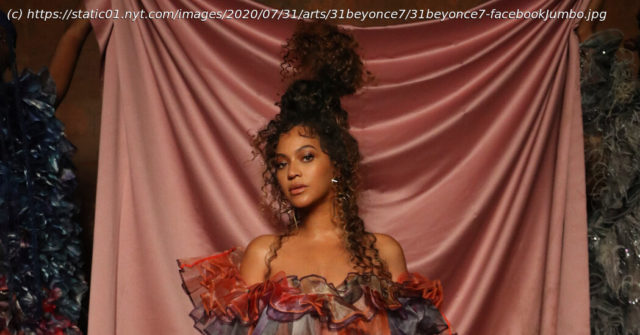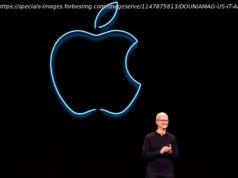Six critics on the visual album rooted in her “Lion King”-inspired record “The Gift,” a grand statement of African-diaspora pride and creative power.
When Beyoncé took a speaking role as Nala — the eventual queen — in the 2019 remake of “The Lion King,” she decided to delve beyond Disney’s Hollywood version of Africa. She added a new, gospel-charged song, “Spirit,” to the film’s soundtrack, and gathered an international coalition, featuring up-and-coming African songwriters and producers, to join her on a full-length album, “The Lion King: The Gift.” Now she has turned songs from the album into a film of her own, working with various directors as she did on her visual albums “Beyoncé” and “Lemonade.” Here, critics for The New York Times discuss the imagery and implications of “Black Is King.” Let’s take a moment, shall we, to appreciate that beauty will make you tolerate anything, including waking up at the crack of dawn to behold it. Very little compares to the rising sun. Often not much tops Beyoncé and the extremes sometimes required to experience her (canceling an evening, dropping everything, getting filthy at Coachella). “Black Is King” is rather humane. You simply drag yourself from bed, head to Disney+, and the beauty begins. Well past the halfway point, Beyoncé is just facing Kelly Rowland, serenading her, beaming at her. The sincerity is so intense, Rowland has to avert her eyes. She’s girlishly overcome. The sunrise is too much. Not for me. Most of this film ripples with that kind of love — of people, of bodies, of the elements, of self, of stuff. (Someone involved really loved the death car from the great “Holy Motors”; a tricked-out homage rides here, too.) My usual qualm with the Beyoncé visual experience applies to this one: The people who’ve edited it don’t allow us to savor a single shot for longer than a few seconds. It adheres to ancient music-video ideas of chaos, incoherence and looks. Steadiness was part of the thrill of her at Coachella. The stagecraft transfixed the cameras; the editing deferred to motion. What if the songs here were wedded to full-blown set pieces, in addition to kaleidoscopic exuberance? That, I suppose, would make the project a musical. And that’s not what this wants to be. But I’m greedy. When I see a handful of dancers and Beyoncé awash in so much whiteness that all the other color comes from skin and flowers, I just want five minutes of that. Tableaux do exist here, minced as they are. (That brown-on-white passage is from “Nile.”) The strongest come during “My Power,” and “Mood 4 Eva.” The latter finds itself on somebody’s estate and features the Knowles-Carters a-floss and a-flex. There’s a real Baz Luhrmann zaniness working here, from the synchronized, Esther Williams pool party (everybody side-dives in except our star) to the manic instant grins that Beyoncé, the movie’s wee boy-prince and her mother, Tina Knowles-Lawson, flash. You could sense that those were good afternoons for everybody. It hits the spot. “Beyoncé” and “Lemonade” were triple-impact shocks (new music, new images, new ideas). “Black Is King” extends more than innovates. It’s playing. Beauty is a reason this film exists. The interstitial language that Beyoncé recites hails, just as it did in “Lemonade,” in part, from the earthen poetry of Warsan Shire. “We were beauty before they knew what beauty was” and “your skin is not only dark” are two of the recital’s most exhilarating lines. They offer the beauty of correction. They approach another of the film’s strengths: rebuke — of, in its title and closing sequence, the gospel opportunism in Kanye West’s film “Jesus Is King.” And, perhaps, of “The Lion King.” What else is this but a restoration of flesh and blood to cartoon landscapes? There are references to Julie Dash and David Hammons and appearances by the musician Moonchild Sanelly, the model Adut Akech and the dancehall star Shatta Wale: a motherland connection. Many a notable Black American has managed amazement in Africa: Malcolm X, James Brown and Muhammad Ali, Nina Simone, her ashes. Beyoncé’s trip feels like a search for confirmation: a living myth roving terrain where myths were made. “The Lion King: The Gift,” Beyoncé’s companion album to the “Lion King” soundtrack, was a grand statement of African-diaspora unity, pride and creative power. It presented modern African voices and contemporary African sounds — among the most kinetic productions in pop — not as exotic guests of their American collaborators, but as equals reinforcing each other, an international brotherhood and sisterhood. “Black Is King,” Beyoncé’s visual album built on that album’s songs, goes even further. The deluxe version of “The Lion King: The Gift” only slightly extends the original album; its major addition is two versions (one with marching band-style horns) of “Black Parade,” a song that addresses current Black Lives Matter protests and much more. The deluxe version also, mercifully, eliminates the original album’s snippets of “Lion King” dialogue. There’s still some “Lion King” material in the “Black Is King” visual album to detail some of its messages, along with bits of lectures that equate kingship with responsible manhood. Beyoncé also recites Warsan Shire’s poetry to insist on Africa’s ancestral legacies and the glories of Black beauty. Other transitions use African traditional music from Smithsonian Folkways recordings, tacitly suggesting the continuity of old and new. And now and then, there are glimpses within the music, like a magnificent, purple-suited choir joining Beyoncé to sing “Spirit” a cappella. Beyoncé is unquestionably the star of “Black Is King.” She’s presented as a panoply of archetypes — mother, boss, clubgoer, biker, queen — with an apparently infinite wardrobe that draws on ancient African iconography alongside extravagant haute couture. She places herself in glorious open landscapes, a mansion, a gritty warehouse and a leopard-patterned Rolls-Royce. But she shares the screen with African and Black American faces: dancers, tribal elders, city hustlers, judges in wigs and robes, hoop-skirted debutantes and their beaus.






